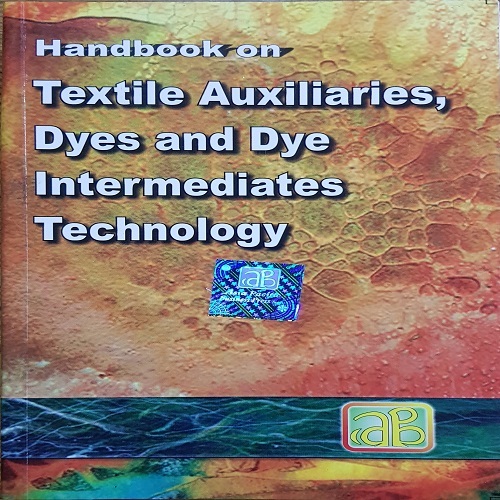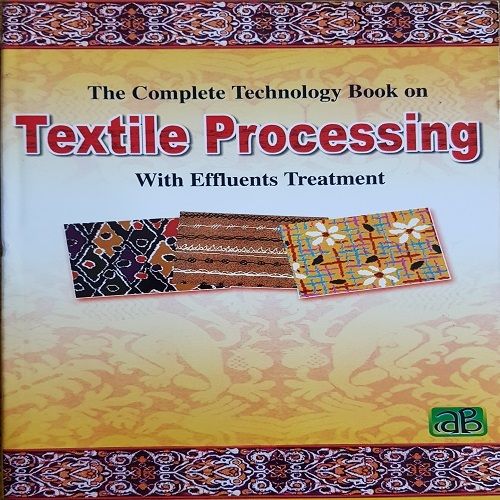Call us: 08042307456
Handbook on Textile Auxiliaries, Dyes and Dye Intermediates Technology

Handbook on Textile Auxiliaries, Dyes and Dye Intermediates Technology Price And Quantity
- 1 Piece
- 1575.00 - 1600.00 INR/Piece
- 1575 INR/Piece
Handbook on Textile Auxiliaries, Dyes and Dye Intermediates Technology Trade Information
- Cash on Delivery (COD) Cash Against Delivery (CAD)
- 10 Piece Per Day
- Cardboard boxes are industrially prefabricated boxes, primarily used for packaging goods and materials and can also be recycled.
- All India
Product Description
Textile auxiliaries are defined as chemicals of formulated chemical products which enables a processing operation in preparation, dyeing, printing of finishing to be carried out more effectively or which is essential if a given effect is to be obtained. Certain Textile Auxiliaries are also required in order to produce special finishing effects such as wash & wear, water repellence, flame retardancy, aroma finish, anti odour, colour deepening etc. The prime consideration in the choice of Textile materials is the purpose for which they are intended, but colour has been termed the best salesman in the present scenario. The modern tendency is towards an insistence on colour which is fast to light, washing, rubbing, and bleaching; this movement makes a great demand on the science of dyeing. Auxiliaries, dyes and dye intermediates play a vital role in textile processing industries. The manufacture and use of dyes is an important part of modern technology. Because of the variety of materials that must be dyed in a complete spectrum of hues, manufacturer now offer many hundreds of distinctly different dyes. The major uses of dyes are in coloration of textile fibers and paper. The substrates can be grouped into two major classes-hydrophobic and hydrophilic. Hydrophilic substances such as cotton, wool, silk, and paper are readily swollen by water making access of the day to substrate relatively easy. On other hand hydrophobic fibers, synthetic polyesters, acrylics, polyamides and polyolefin fibers are not readily swollen by water hence, higher application temperatures and smaller molecules are generally required. Dye, are classified according to the application method. Some of the examples of dyes are acid dyes, basic or cationic dyes, direct dyes, sulfur dyes, vat dyes, reactive dyes, mordant dyes etc. Colorants and auxiliaries will remain the biggest product segment, while faster gains will be seen in finishing chemicals. World demand for dyes and organic pigments is forecast to increase 3.9 percent per year through 2013, in line with real gains in manufacturing activity. Volume demand will grow 3.5 percent annually. While the textile industry will remain the largest consumer of dyes and organic pigments, faster growth is expected in other markets such as printing inks, paint and coatings, and plastics. Market value will benefit from consumer preferences for environmentally friendly products, which will support consumption of high performance dyes and organic pigments.
Some of the fundamentals of the book are antimony and other inorganic compounds, halogenated flame retardants, phosphorous compounds, dyes and dye intermediates, textile fibers, pigment dyeing and printing, dry cleaning agents, dry cleaning detergents, acrylic ester resins, alginic acid, polyvinyl chloride, sodium carboxy methyl cellulose, guar gum, industries using guar gum, gum tragacanth, hydroxyethyl cellulose, polyethylene glycol, industries using polyethylene glycols, etc.
The book covers details of antimony and other inorganic compounds, halogenated flame retardants, silicone oils, solvents, dyes and dye intermediates, dry cleaning agents, different types of gums used in textile industries, starch, flame retardants for textile and many more. This is very resourceful book for new entrepreneurs, technologists, research scholars and technical institutions related to textile.
 English
English Spanish
Spanish French
French German
German Italian
Italian Chinese (Simplified)
Chinese (Simplified) Japanese
Japanese Korean
Korean Arabic
Arabic Portuguese
Portuguese



